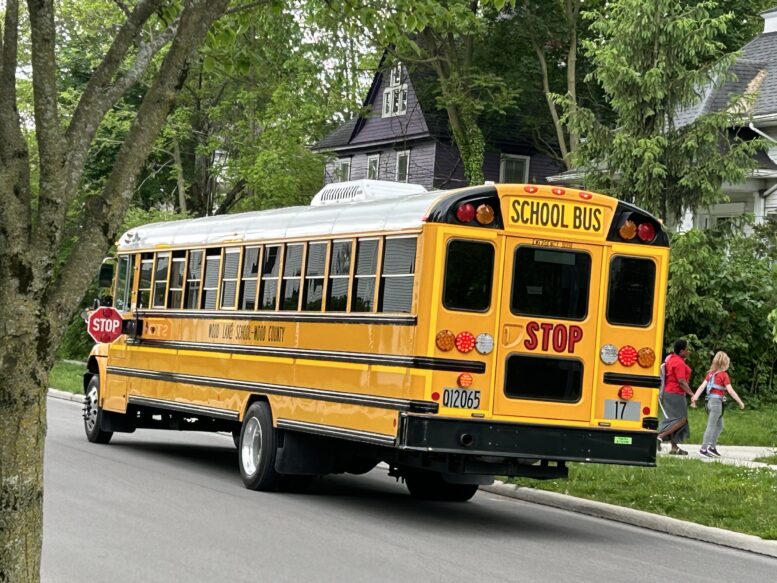BY MEGAN HENRY
Almost three-fourths of Ohio eighth graders were not proficient in math and nearly two-thirds of Ohio fourth graders were not proficient in reading in 2022, according to a new study.
Seventy-one percent of Ohio eighth graders were not proficient in math — a number that has only gotten worse over time, according to the latest Annie E. Casey Foundation Kids Count Data Book. Back in 2019, 62% of Ohio eighth graders were not proficient in math.
“It’s super important to reach those benchmarks because it’s what’s at least been shown to be where we want our students to be that helps set them up to be successful in later grades and later in life,” said Matthew Tippit, policy associate at Children’s Defense Fund-Ohio.
Ohio fared slightly better than the rest of the country — 74% of American eighth graders were not proficient in math, according to the report.
Sixty-five percent of Ohio fourth graders were not proficient in reading in 2022, a percent point worse when compared to 2019. Nationally, 68% of fourth graders were not proficient in reading.
Ohio public schools are preparing to implement the science of reading which is based on decades of research that shows how the human brain learns to read and incorporates phonemic awareness, phonics, fluency, vocabulary, and comprehension.
The state’s two-year budget, which was signed into law last year, included $168 million science of reading provisions.
A little more than half (57%) of Ohioans three and four-year-olds were not in school during 2018-2022, according to the report.
Thirty percent of all students nationally (14.7 million) were chronically absent from school, which typically means missing at least 10% of school days in a year.
“The COVID-19 pandemic wrought serious academic damage as it closed schools and separated students from their physical learning environment,” Annie E. Casey Foundation President and CEO Lisa Hamilton said in the report. “Unprecedented drops in fourth grade reading and eighth grade math proficiency among students in the United States between 2019 and 2022 amounted to decades of lost progress.”
The stakes for catching up on the COVID-19 learning loss are high. Up to $31 trillion in the U.S. economic activity is dependent on addressing unfinished pandemic-era backsliding, according to a February report from the Hoover Institution, a public policy think tank at Stanford University.
Students who don’t go beyond lower math levels could be 50% more likely to be unemployed after high school, according to a 2013 report published in the Federal Reserve Bank of Cleveland’s Economic Commentary.
Overall, Ohio ranked 28th in the nation based on 16 indicators and ranked 18th in the education category.
Poverty
Almost half a million Ohio children were living in poverty in 2022, according to the report. The 446,000 children living in poverty made up 18% of Ohio’s kids. 10% of Ohio children representing 264,000 kids lived in high-poverty areas in 2022.
Sixteen percent of American children totaling 11,583,000 kids were living in poverty in 2022, according to the study.
“That’s so concerning to me just because of what we know that living in poverty can do to all other factors of life,” Tippit said. “We know that health indicators tend to be lower. We know that education outcomes are worse. We know that long term, you’re more likely to stay at that level of income as your family.”
About 40% of Ohio children have experienced one or more adverse childhood experience such as family economic hardships, their parents being divorced or a parent spending time in jail, according to the report.
Ohio House Bill 352 would create the 26-member Adverse Childhood Experiences Study Commission which would recommend legislative strategies to the General Assembly.
State Reps. Rachel B. Baker, D-Cincinnati, and Sara Carruthers, R-Hamilton, introduced the bipartisan bill which passed last month in the House.
Also, from Ohio Capital Journal:
U.S. Sen. Sherrod Brown holds field hearing on protecting public workers’ Social Security benefits
U.S. Sen. Sherrod Brown, D-OH, has spent several years trying to repeal two federal provisions that reduce retirement income for many public servants. Friday, he held a Congressional subcommittee field hearing in Columbus to discuss the issue.
The audience of mostly union members hoisted signs and supplied a steady chorus of ‘yeah’s, ‘mm-hmm’s and ‘that’s right’s. Packed to the gills matching t-shirts or buttons, the Columbus Firefighter’s union hall felt a bit closer to a rally than a congressional hearing.
In many cases, public sector workers — think police, firefighters, teachers and school support staff — don’t pay in to the Social Security system. The idea is their union-negotiated pension programs take the place of the federal retirement program. But in practice, many of those employees work in the private sector as well. READ MORE

